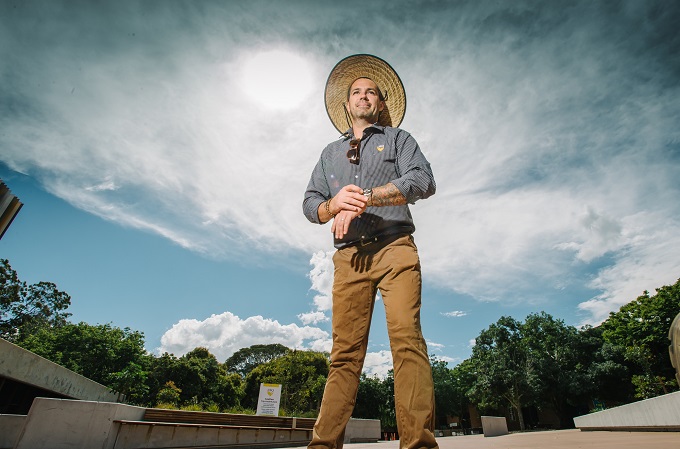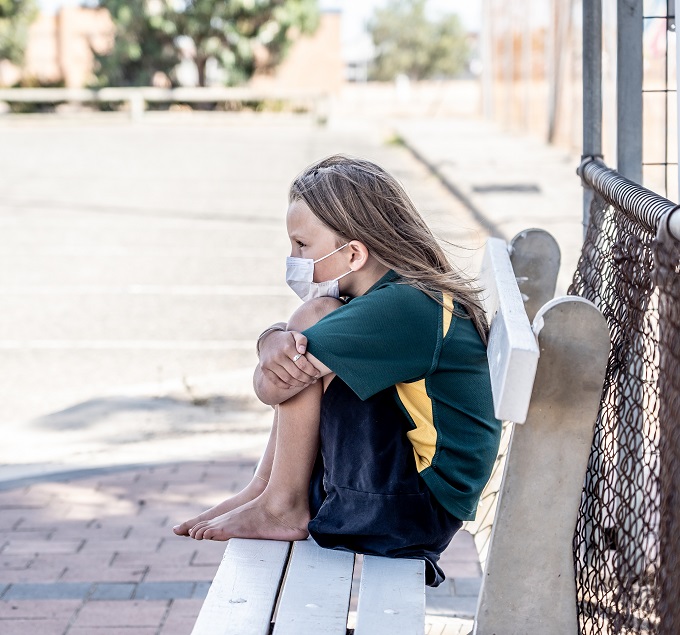Study finds playground duty times are a burning issue for teachers

Changing meal break times in schools could reduce teachers’ risk of skin cancer by more than half.
That’s according to new research by University of Southern Queensland PhD student Ben Dexter, who used a mathematical model to calculate the effect of playground duty times on solar ultraviolet (UV) radiation to Queensland teachers.
The study, published today (December 4) in the Journal of Photochemistry and Photobiology B: Biology, found the risk of teachers developing keratinocyte skin cancers varied by up to 45 per cent between schools across the state.
Queensland has the highest rate of skin cancer in the world and it is estimated two out of three people in Australia will get some form of skin cancer.
Mr Dexter, an associate lecturer in mathematics and statistics at the University of Southern Queensland, said although teachers spend the majority of their working days indoors, they are required to spend time outdoors for playground and bus supervision duties, which coincide with peak UV radiation periods.
“The amount of UV radiation exposure for teachers during a school day depends on the timing of school start, finish and meal breaks,” Mr Dexter said.
“We found the difference in exposure levels and skin cancer risk between schools based just on the opening, closing and supervision times varied significantly not only throughout the entire state, but within each of the seven education regions.
“It’s quite a concern, especially as this study only looked at teachers who were outside on breaks two times a week, but schoolchildren could potentially spend around 10 times as much time outside at school.”
To calculate teachers’ average daily sun exposure, Mr Dexter developed a model using local ambient UV radiation data from last year.
He then applied the solar UV radiation exposure levels during outdoor supervision duty and outside school hours to create the relative risk of the two most common types of skin cancer, basal cell carcinoma and squamous cell carcinoma.
He also compared the risk for teachers at 1578 schools in the state’s seven education districts.
The results showed the North Cost (Sunshine Coast and Wide Bay) had the biggest variation between schools in the region, suggesting the relative risk could increase by as much as 64 per cent due to the difference in teacher duty schedules and location.
Mr Dexter said he hoped the findings would encourage schools, governments and education authorities to consider more thoughtful timetabling.
“Most schools have their breaks around 11am and 1.30pm each day, but having breaks at times when there is less UV radiation would likely lead to a significant reduction in exposure over a whole school year,” he said.
“This is particularly the case for schools in more densely populated districts like Metropolitan Brisbane, where school opening, closing and break times is a major factor.
“For instance, in Metropolitan Brisbane we found two schools separated only 13km apart had a 15 per cent difference in annual UV radiation exposure. This in turn led to a 44 per cent increased relative risk of squamous cell carcinoma.
“The main cause for this increase was the schools had their breaks at very different times.”
While protective strategies such as clothing, hats and sunscreen are strongly recommended to reduce high UV exposures, Mr Dexter said avoiding unnecessary sun exposure is still the best way to protect yourself from skin damage.
“Schools have a huge focus on the use of hats, sunscreen and protective clothing worn by schoolchildren, but not many have considered changing their meal break times as a preventive measure for skin cancer,” he said.
“Making some simple timetabling changes may not only help save lives, but reducing skin cancer rates would have significant long-term cost benefits to the healthcare system.”
Mr Dexter said the next phase of the research was to refine the model and estimates by applying Australian derived estimates of non-teaching day exposure timing and durations, as well as location-specific daily cloud cover.
It also aims to identify every school’s highest UV radiation level during each term so schools can schedule its breaks to reduce levels of exposure for students and teachers.
The paper ‘Keratinocyte skin cancer risks for working school teachers: Scenarios and implications of the timing of scheduled duty periods in Queensland, Australia’ can be accessed here.







